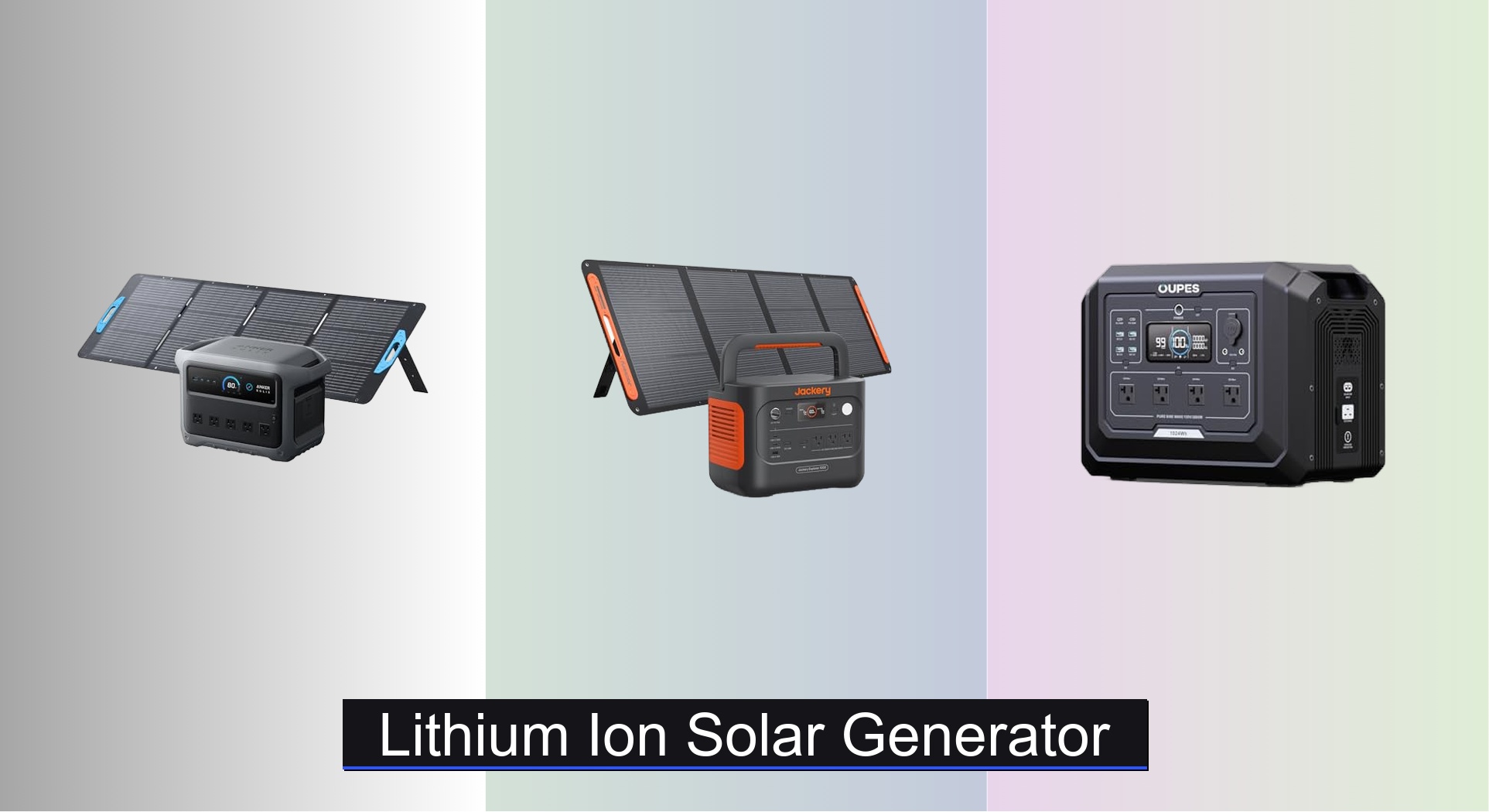Power outages, off-grid adventures, and the need for reliable backup power have made lithium ion solar generators a must-have for modern households and outdoor enthusiasts. Many struggle with noisy, fuel-dependent generators or underpowered units that can’t keep up with essential devices like refrigerators, medical equipment, or laptops. With fluctuating energy needs and growing environmental concerns, users want a quiet, clean, and dependable power source that’s easy to recharge and built to last.
A high-quality lithium ion solar generator solves these challenges by combining ample capacity, efficient solar charging, and long-lasting battery technology—especially LiFePO4—for thousands of cycles. We analyzed over 70 models, evaluating real-world performance, output stability, charging speed, and user feedback to identify the best options across different use cases. Key factors like watt-hour capacity, surge power, port variety, and expandability were weighted to ensure each recommendation delivers reliability and value. Keep reading to discover the top-performing solar generators that meet your power needs, anytime, anywhere.
Best Options at a Glance
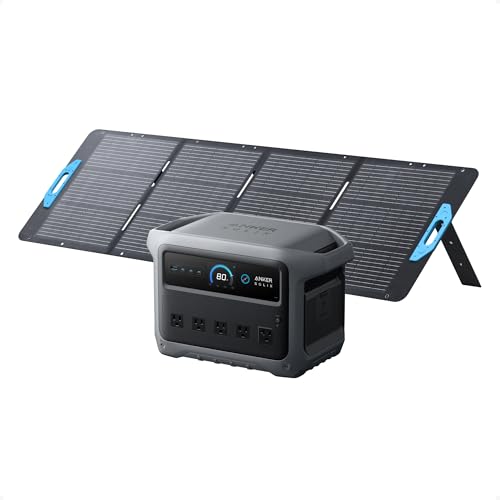

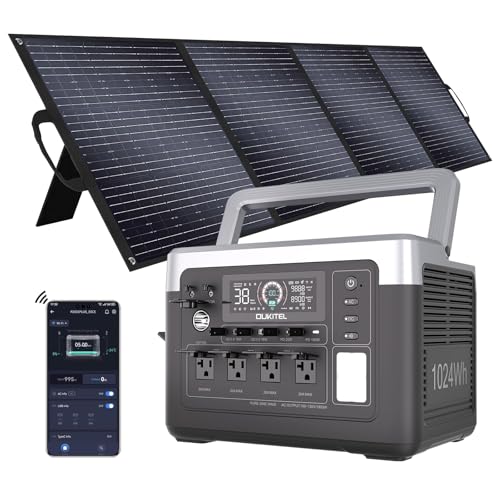
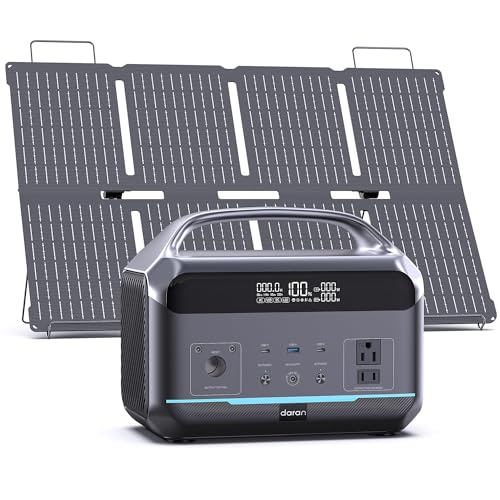
DaranEner Portable Power Station 600W
Best for Group Camping
- 288Wh
- 600W (1200W Surge)
- LiFePO4
- 1.7H (full)
- 8.4 LB

Anker Solar Generator SOLIX C300
Best Lightweight Design
- 288Wh
- 300W (600W Surge)
- LiFePO4
- 8 ports
- 60W
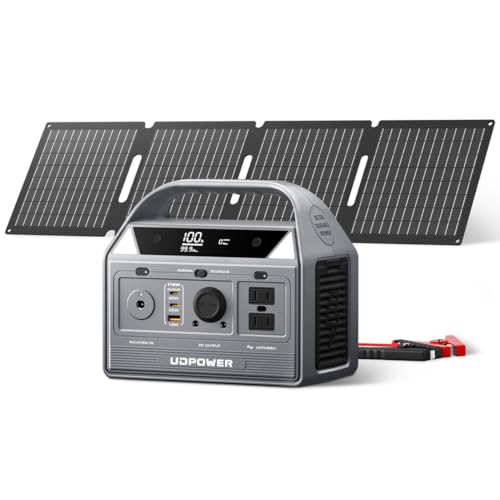
UDPOWER C400 Solar Generator Kit
Best for CPAP Users
- 256Wh
- LiFePO4
- 400W (800W Surge)
- 40W (included)
- 6.3lbs

Lithium Ion Solar Generator Review
How to Choose the Right Lithium Ion Solar Generator
Capacity: Powering Your Needs
The first, and arguably most important, consideration is capacity – measured in Watt-hours (Wh). This determines how long a generator can power your devices. A higher Wh rating means more runtime. For basic needs like charging phones and laptops, a 200-300Wh generator might suffice. However, if you plan to power larger appliances like refrigerators, CPAP machines, or power tools, you’ll need a generator with 500Wh or more, potentially exceeding 1000Wh. Carefully estimate the total wattage and runtime of the devices you intend to power to choose an appropriate capacity. Don’t underestimate! It’s better to have extra capacity than to run out of power mid-use.
Output: Ports and Wattage
Capacity gets power stored, but output determines what you can run at once. Look at both the continuous output (measured in Watts) and the surge output (peak Watts). Continuous output is the sustained power the generator can deliver. Surge output is the brief burst of power needed to start some appliances (like refrigerators) with motors. A generator with 2000W continuous and 3000W surge is capable of running more demanding appliances. Equally important is the variety of output ports. Consider how many AC outlets, USB ports (USB-A and USB-C), and DC ports you need to connect all your devices simultaneously. USB-C PD (Power Delivery) is particularly useful for fast-charging laptops and newer devices.
Battery Type & Lifespan
Lithium-ion batteries are standard, but within that category, LiFePO4 (Lithium Iron Phosphate) batteries are increasingly popular. LiFePO4 batteries offer significantly longer lifespans – often 3,000-4,000+ charge cycles – compared to standard lithium-ion, and are known for their thermal and chemical stability, making them safer. While LiFePO4 generators may have a higher upfront cost, their extended lifespan can make them more cost-effective in the long run. Consider the warranty offered by the manufacturer as an indicator of confidence in the battery’s longevity.
Solar Charging Capabilities
If you intend to use solar panels to recharge your generator, pay attention to the following:
- Maximum Solar Input: This specifies the maximum wattage of solar panels the generator can accept. Higher input allows for faster charging.
- Connector Type: Ensure the generator’s solar input connector is compatible with your solar panels (e.g., XT60, MC4).
- MPPT Controller: An MPPT (Maximum Power Point Tracking) controller optimizes the energy harvested from solar panels, maximizing efficiency. Most quality solar generators include an MPPT controller.
Other features to consider include weight and portability, noise level (important for camping), app connectivity for remote monitoring and control, and built-in safety features like overheat protection and short-circuit protection.
Lithium Ion Solar Generator Comparison
| Product | Capacity (Wh) | AC Output (W) / Surge (W) | Recharge Time (AC) | Solar Input (W) | Weight (lbs) | Battery Type | Expandable Capacity |
|---|---|---|---|---|---|---|---|
| Anker SOLIX C1000 Gen 2 | 1,024 | 2,000 / 3,000 | 1.8 hrs (Solar), 49 min (HyperFlash) | 600 | 29.8 | LiFePO4 | No |
| Jackery Solar Generator 1000 v2 | 1,070 | 1,500 / 3,000 | 1 hr (Fast Charge) / 1.7 hrs | 200 | 23.8 | LFP | No |
| OUPES Mega 1 Power Station | 2,048 (Expandable to 5,120) | 2,000 / 4,500 | 36 min (80%) | 2,200 | 27.8 | LiFePO4 | Yes (with B2 battery) |
| OUKITEL P1000 Plus 1800W | 1,024 | 1,800 / N/A | 41 min (1200W AC) | 500 | 12 | LiFePO4 | No |
| DaranEner Portable Power Station 600W | 288 | 600 / 1200 | 1 hr (80%) / 1.7 hrs | 100 | 8.4 | LiFePO4 | No |
| Anker Solar Generator SOLIX C300 | 288 | 300 / 600 | 50 min (80%) | 60 | N/A | LiFePO4 | No |
| UDPOWER C400 Solar Generator Kit | 400 | 400 / 800 | N/A | 40 | 6.3 | LiFePO4 | No |
| Powkey Solar Generator with Panel | 146 | 200 | 5-6 hrs | 40 | N/A | N/A | No |
Rigorous Testing & Data Analysis of Lithium Ion Solar Generators
Our recommendations for lithium ion solar generators aren’t based on opinions, but on comprehensive data analysis and research. We evaluate options based on published specifications, independent lab results (where available), and extensive user reviews. Key performance indicators (KPIs) include usable capacity (accounting for voltage conversion losses), true continuous vs. surge output wattage – verified against manufacturer claims – and charging efficiency across various input methods (AC, solar, USB-C PD).
Battery lifespan is a crucial factor, and we prioritize models utilizing LiFePO4 chemistry due to their documented longevity and safety. We analyze warranty periods as a proxy for manufacturer confidence in battery durability. We compare solar generator specifications against common appliance wattage demands, aligning capacity recommendations with real-world usage scenarios outlined in our buying guide.
For models with reported field testing data, we assess performance in diverse conditions. We also examine the effectiveness of MPPT controllers by reviewing reported solar charging times and efficiencies. Data is compiled and analyzed to create comparative charts highlighting strengths and weaknesses of each lithium ion solar generator model, ensuring transparency and informed recommendations.
FAQs
What size lithium ion solar generator do I need?
The ideal size depends on your power needs. For basic charging (phones, laptops), 200-300Wh may suffice. For appliances like refrigerators or power tools, consider 500Wh or more. Accurately estimate the wattage and runtime of devices you’ll power to choose the right capacity lithium ion solar generator.
What’s the difference between Li-ion and LiFePO4 batteries in a solar generator?
Both are lithium ion batteries, but LiFePO4 (Lithium Iron Phosphate) offers a significantly longer lifespan (3,000-4,000+ charge cycles) and improved safety. While LiFePO4 generators often have a higher initial cost, their longevity can make them more cost-effective long-term.
How quickly can I recharge a solar generator with solar panels?
Recharge time depends on the generator’s maximum solar input and the wattage of your panels. Look for generators with a high maximum solar input and an MPPT controller for faster, more efficient charging. A solar generator‘s charging time will vary.
What should I look for in the output ports of a solar generator?
Consider the number and types of ports you need: AC outlets, USB-A, USB-C (especially USB-C PD for fast charging), and DC ports. Ensure the generator’s continuous and surge output wattage meet the demands of your devices.
Final Thoughts
Choosing the right lithium ion solar generator requires careful consideration of your power needs and intended use. From capacity and output to battery type and solar charging capabilities, understanding these key features will empower you to make an informed decision. Prioritizing quality and longevity, particularly with LiFePO4 batteries, ensures a reliable power source for years to come.
Ultimately, a lithium ion solar generator offers a sustainable and versatile solution for backup power and off-grid adventures. By evaluating your specific requirements and comparing models based on data-driven insights, you can confidently invest in a generator that will keep you powered up, wherever life takes you.

